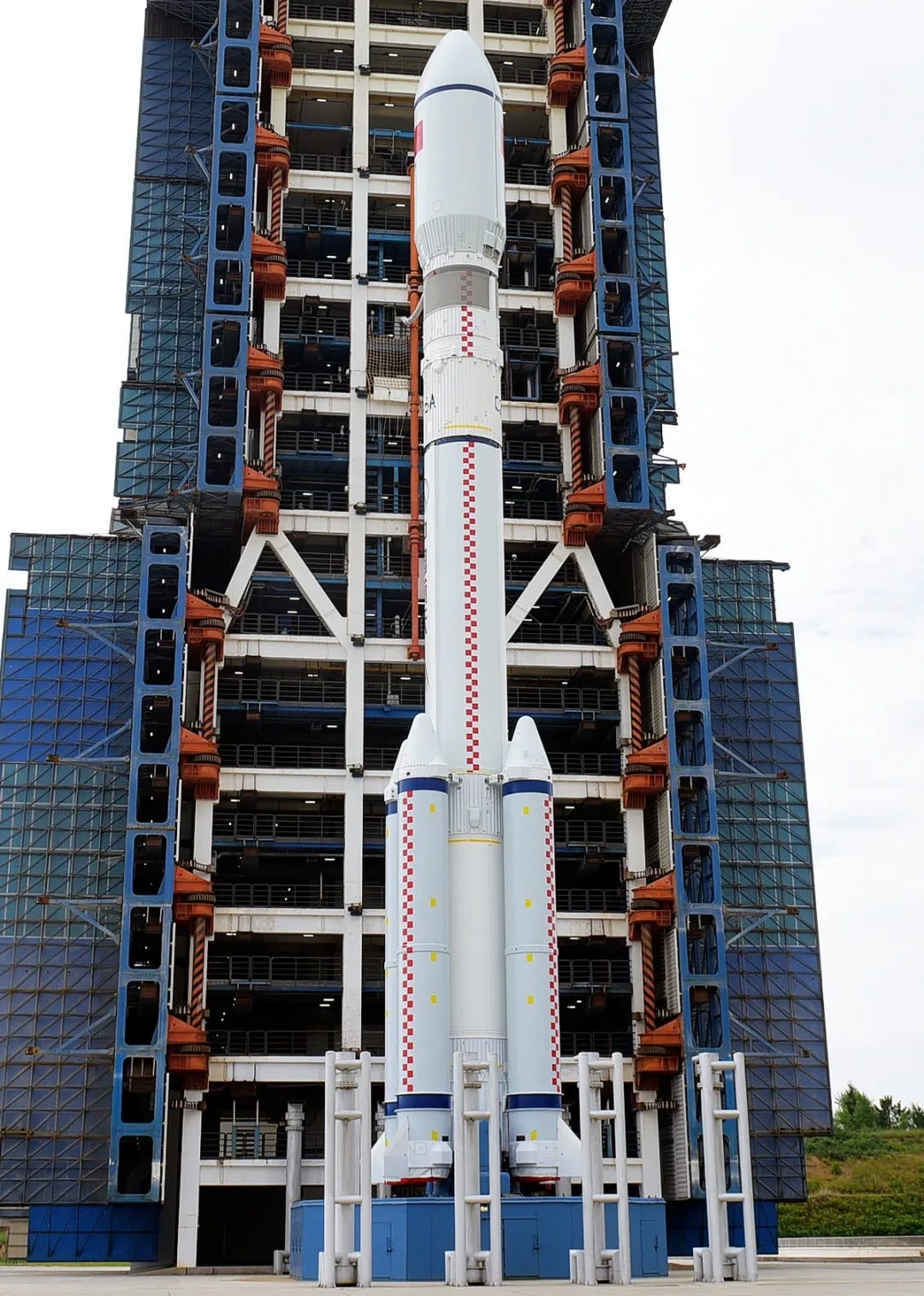GuoWang From Green Hills [Long March 6A Y14]
Another group of satellites has been added to the constellation.
Blasting off from the Launch Complex 9A at a vividly green Taiyuan Satellite Launch Center at 18:03 pm China Standard Time (10:03 Universal Coordinated Time), a Long March 6A flew into a polar orbit carrying a group of satellites.
Atop the Long March 6A were the fifth batch of GuoWang (国网) mega-constellation satellites, of which another five spacecraft are believed to have been onboard. The China Academy of Space Technology contributed to the satellite group.
The GuoWang constellation is operated by China Satellite Network Group, a state-owned enterprise, and wholly backed by the Chinese government. By the 2030s, up to 13,000 satellites could be in orbit providing worldwide internet services, however China-focused services will be the immediate priority.
GuoWang is still trailing the Qianfan (千帆) mega-constellation, also set to provide space-based internet services, with 39 satellites now in orbit, compared to Qianfan’s 90.
Two different satellite variants are believed to be in use for the constellation, a larger version used on vehicles like the Long March 5B, while smaller ones are used when launched atop of rockets such as the Long March 8A or Long March 6A. An electric propulsion system is likely in use due to a planned operational orbit above 1000 kilometers in altitude, as it would be the most efficient means of propulsion to deorbit each spacecraft once they reach the end of their operational lives after several years. Few other details have been shared about the design of GuoWang satellites, but a slide from one of Space Pioneer’s presentations states that each satellite weighs approximately 600 kilograms.
Like the last Long March 6A, today’s featured a grey band on the second stage, which is believed to be for maintaining propellant temperature over an extended duration, similar to SpaceX’s mission extension kit.
According to the Shanghai Academy of Spaceflight Technology, ahead of today’s mission teams refined launch site operational procedures, including rocket hardware transfer and satellite installation protocols. The team also developed specialized flight trajectories to counter summer high-altitude winds at the launch site, improving launch success.
Today’s launch was the 14th mission for the Long March 6A, the 585th launch of the Long March launch vehicle series, and the 240th Long March vehicle launch from the Shanghai Academy of Spaceflight Technology. This was also the 39th launch from China in 2025.
Liftoff video via Cosmic Penguin on Bluesky.
Check out the previous Long March 6A launch
GuoWang Makes Taiyuan Debut [Long March 6A Y8]
A Long March 6A blasted off from Launch Complex 9A at the Taiyuan Satellite Launch Center at 04:45 am China Standard Time on June 6th (20:45 pm Universal Coordinated Time on June 5th), heading for polar orbit carrying a group of satellites.
What is the Long March 6A?
This section is for those less familiar with China's Long March series of launch vehicles.
The Long March 6A is the first new-generation launch vehicle in China to utilize a combination of solid and liquid propellants. This vehicle was developed by the Shanghai Academy of Spaceflight Technology and utilizes a two-and-a-half-stage design, the boosters burn an unspecified solid propellant with the first and second stages burning rocket-grade kerosene and liquid oxygen.
The payload capacity of the launch vehicle is currently as follows:
8,000 kilograms to low Earth orbit
4,500 kilograms to a 700-kilometer sun-synchronous orbit
The first-stage is powered by two YF-100 engines, generating a combined thrust of approximately 244 tons using rocket-grade kerosene and liquid oxygen. The first-stage is augmented by four solid rocket boosters, each producing 124 tons of thrust from an unspecified solid propellant, resulting in a combined booster thrust of 492 tons. Together, the first-stage and boosters generate a total thrust of 736 tons. The second stage is powered by a single YF-115 engine, producing 18 tons of thrust using also burning rocket-grade kerosene and liquid oxygen.
On the launchpad, the Long March 6A is believed to be up to 52 meters tall, a handful of fairings are available, and weighs 530,000 kilograms when fully fuelled. The first and second stages of the vehicle have a diameter of 3.35 meters while the solid-fuelled boosters have a diameter of 2 meters, the fairing has a diameter of 4.2 meters.
So far, every Long March 6A has launched from the Taiyuan Satellite Launch Center, in the north of Shanxi province.
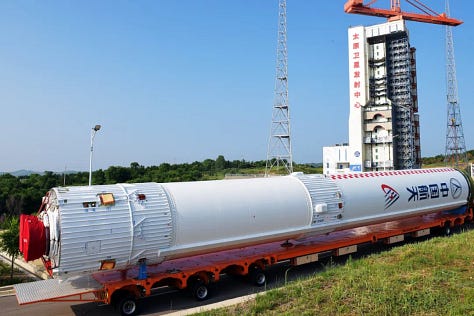
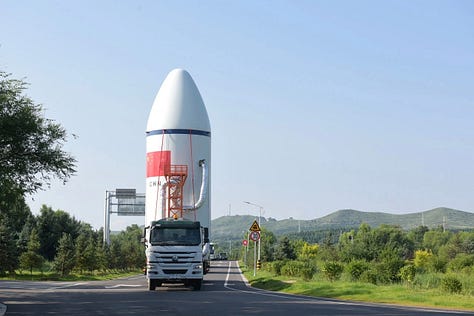
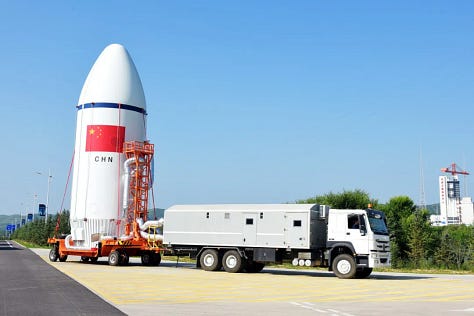



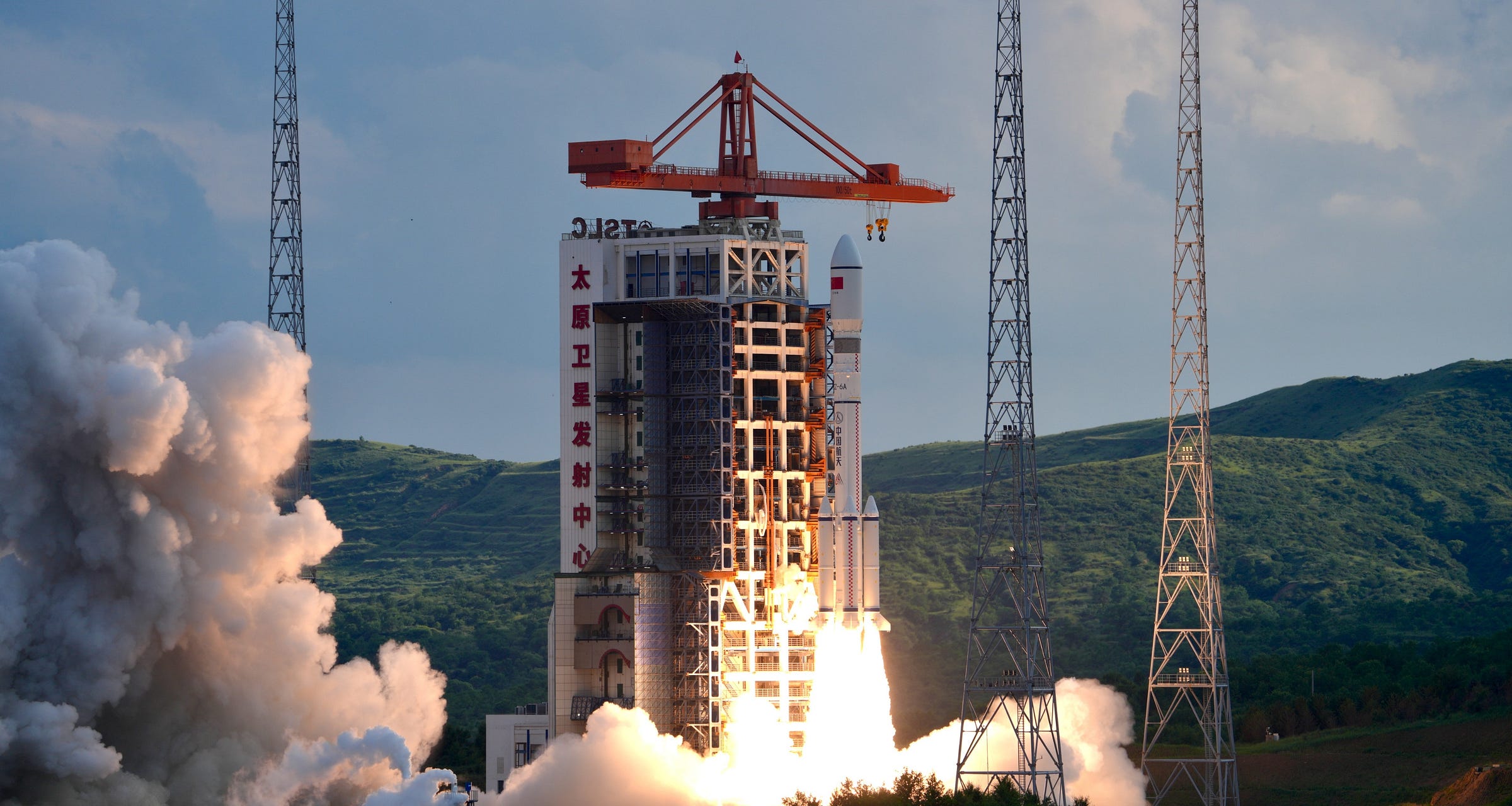
![GuoWang Makes Taiyuan Debut [Long March 6A Y8]](https://substackcdn.com/image/fetch/$s_!JZTq!,w_1300,h_650,c_fill,f_auto,q_auto:good,fl_progressive:steep,g_auto/https%3A%2F%2Fsubstack-post-media.s3.amazonaws.com%2Fpublic%2Fimages%2F53c8a23c-8397-493b-b7f8-26eace24a27c_3955x2381.jpeg)
